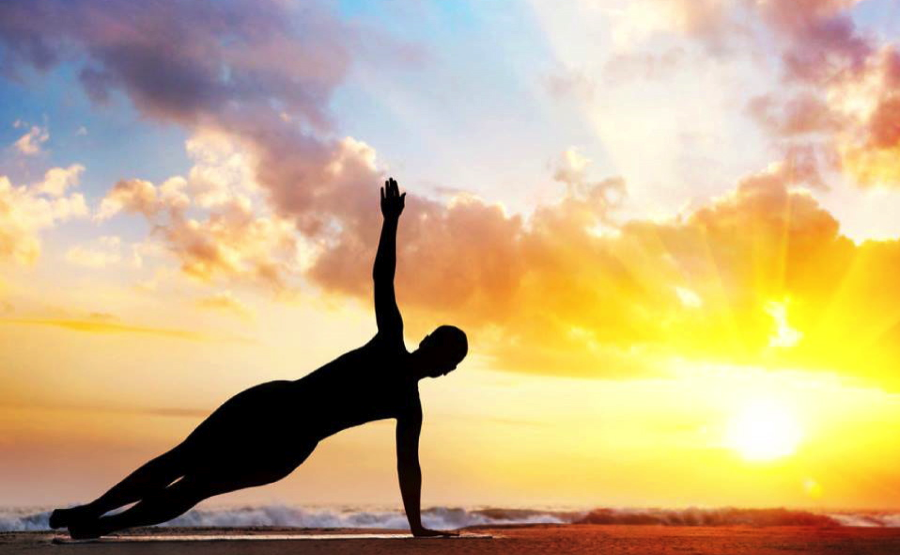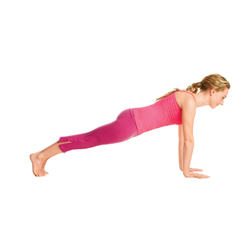A plank is the powerhouse of all core exercises. In a plank you are using almost every one of the 650+ muscles in your body to support your own body weight. It is a great way to warm up your body and access all of your deep core muscles. A plank is also a fantastic exercise for you to begin noticing how subtle shifts and adjustments in your alignment help you to hold your body weight longer and give you better access to your core. It takes a lot of mindfulness to plank correctly but it’s worth the mental and physical effort because the alignment here translates directly to the internal and external support you need for standing upright and moving throughout your life properly.
The first two things you should focus on in your plank are your points of foundation – your hands and feet.
Hands
Your hands should be shoulder distance apart (middle of wrist lined up with the outside of your shoulder, front of the wrist lined up with the front of your shoulder) and your fingers spread wide to create a greater surface area of support. Your pointer finger should be pointed straight in front of you. The more energy in your hands, the better scapular and cervical stability you’ll have. Claw the floor with your fingers and make sure the thumb and forefinger mounds are firmly in contact with the ground. Learning this proper alignment of the hands can actually offset wrist injuries and carpal tunnel syndrome.
Feet
Your feet should be hip distance apart with the balls of your feet on the floor, maintaining equal energy in your pinky toe and big toe mound. Your heels should be stacked over the balls of your feet and your outer ankles hugging in towards the centerline. This “hugging in” should translate all the way up through your inner thighs into pelvic floor engagement to give you core support from the inside out.
Once you’ve found foundation, your front body support comes from lifting your pelvic floor up, pulling your abdominals in and up and pressing your thigh bones towards the ceiling. Then layer on back body support by lifting through the center of your hamstrings into the base of your seat and pressing the back of your head towards the ceiling to find length and ease in your neck. Last but not least, let your heart open to the floor in front of you to find width across your chest.
Holding a plank can be a practice in mindfulness if you just move from one alignment principle to the next and back again or focus on finding softness and length on your inhalation and engagement on your exhalation.
If I’ve only got a few minutes to workout, I hold plank for as long as I can, move into downward dog holding there for at least 5 breaths, then come back down for another plank hold (or add in some push-ups). I continue this for as much time as I can squeeze in. It works your legs, core, back and shoulders; and the downward dog gives you the stretching component to balance it all out.
Happy planking!!!
— Jill
P.S. A big thanks to Kerry Corcoran, our anatomy expert, for assisting me in writing our new monthly fit tips.



Planks are such killers but so worth it! I just took my first Dailey method class and wow it was challenging but so energizing. One of the best barre classes I’ve ever taken excited to keep going 🙂
http://www.kellysreality.com